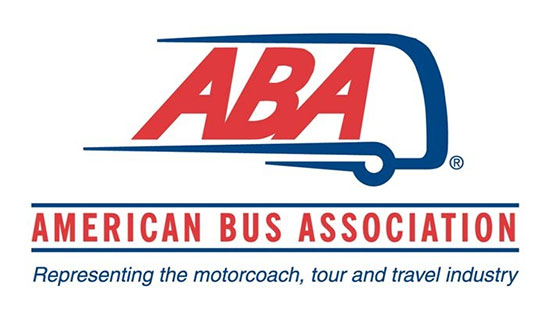BY MARK SZYPERSKI
 Editor’s note: This article is a starting point for operators looking to expand their offerings via federal grants. These types of programs won’t be for everyone, but if you’re looking to fill seats in your buses and coaches on a regular basis, this may be worth your time and effort to investigate. We highly recommend speaking with national bus organizations like United Motorcoach Association (uma.org) and American Bus Association (buses.org) to hear some real-world experiences with these grants.
Editor’s note: This article is a starting point for operators looking to expand their offerings via federal grants. These types of programs won’t be for everyone, but if you’re looking to fill seats in your buses and coaches on a regular basis, this may be worth your time and effort to investigate. We highly recommend speaking with national bus organizations like United Motorcoach Association (uma.org) and American Bus Association (buses.org) to hear some real-world experiences with these grants.
Many of us in business develop a routine after a few years: Our businesses grow, we try out a few niches, and we keep doing what made us the success that we are. Then we seem to hit a plateau or get stuck in the same old thinking, one where we feel we’ve exhausted all growth options with our current fleet. But have you explored the possibilities with government grant programs?
For luxury ground transportation operators who have diverse fleets that may include buses and larger coaches, or who want to take that next step to add them but worry about the investment, the federal government has two programs that could be of interest to those willing to dig a little deeper. Both programs have been in place for years, but many in passenger transportation are not aware of them.
 One program, the 5311(f), is a federal grant administered by most states aimed at providing scheduled and regular transportation in rural areas (defined as less than 50,000 people) to larger hub cities. For many companies with smaller vehicles, this would be a great program for putting that metal into service on a daily basis. It’s important to note that since it is run by the state, each program, its RFP or application process, and its operating requirements will vary. Depending on the fiscal year, most states will have a call for projects annually in the summer to early fall. However, in some cases, the federal grant, as managed by the state, will cover capital costs such as vehicle purchases, or administrative costs like the actual operation of the route, or sometimes both.
One program, the 5311(f), is a federal grant administered by most states aimed at providing scheduled and regular transportation in rural areas (defined as less than 50,000 people) to larger hub cities. For many companies with smaller vehicles, this would be a great program for putting that metal into service on a daily basis. It’s important to note that since it is run by the state, each program, its RFP or application process, and its operating requirements will vary. Depending on the fiscal year, most states will have a call for projects annually in the summer to early fall. However, in some cases, the federal grant, as managed by the state, will cover capital costs such as vehicle purchases, or administrative costs like the actual operation of the route, or sometimes both.
 Intercity bus travel has been growing over the past few years, with the addition of WiFi, electrical plugs to charge devices, and other passenger amenities. According to the American Bus Association, 16 percent of the 604 million passenger trips in 2014 were on scheduled service, and it is growing. The federal government realizes that the intercity bus carriers cannot service the rural areas as they once did, and so this grant was created.
Intercity bus travel has been growing over the past few years, with the addition of WiFi, electrical plugs to charge devices, and other passenger amenities. According to the American Bus Association, 16 percent of the 604 million passenger trips in 2014 were on scheduled service, and it is growing. The federal government realizes that the intercity bus carriers cannot service the rural areas as they once did, and so this grant was created.
While the program is intended to provide scheduled service from rural areas of a state to urban areas, it cannot be used strictly as an airport or commuter service. The route must make a “meaningful connection” with an intercity bus company (e.g, Greyhound) first, as it is meant to provide a continuous flow of transportation throughout the country. In this case, a meaningful connection is where your service connects passengers to the bus company’s urban terminal so they could transfer to the intercity bus and keep traveling.
For example, Miller Transportation, a group that provides charter and tour services, as well as corporate black car transportation, is part of the program in Indiana, Michigan, and its home state of Kentucky. Miller provides a regular route between Washington, Ind., which has a population of nearly 12,000 people, and the larger city of Evansville with 10 times the population. Passengers who use this route may then connect with nationwide routes through the larger commercial bus lines to their destination cities all across the country, local public transportation, or simply stop in Evansville if that is the destination.
If the trip makes the required meaningful connection, then it is possible afterwards to include a stop at the airport of the urban city as part of the regular route. If that happens at the time when many commuters are also making their way to work, it is all the better for your organization. Although the route runs most commonly during commuter time schedules, it is still not allowed to be advertised as a commuter route.
According to the American Bus Association, 16 percent of the 604 million passenger trips in 2014 were on scheduled service, and it is growing.”
Therefore, according to Reginald Addy of Miller Transportation, this allows the company to provide transportation to their friends and neighbors in the community—whom he says are often lower income, 50 or older, and either don’t own or only have limited access to a car—while also creating more demand for drivers, office staff, maintenance personnel, and, of course, keeping their vehicles moving on a consistent basis.
The possible downsides, says Addy, are the number of miles a vehicle may incur as well as the increased maintenance that will inevitably be required. And because this is a regularly scheduled route, you’ll have to make accommodations if the vehicle is out of service for a major repair or other issue.
Whether the grant is used for capital or operating expenses, it should be pointed out it is meant for reimbursement, so the company must spend the money upfront and receive payment afterward. That being said, again, depending on the state, it is possible for the grant could cover up to 100 percent of the costs incurred.
More information on this program can be found at fta.dot.gov. In the search box on the upper right hand side of the website, type in “5311(f)” and the corresponding information will display. This is a federal program that is administered by each state separately.
Another grant program for companies that have motorcoaches in their fleet to consider is the Bus Security Grant program. Buses and other larger passenger vehicles have sadly been shown to be used by terrorists in destructive ways in other countries, so this program has been administered through the Department of Homeland Security to secure vehicles that transport large numbers of passengers into urban areas around the country. This grant program is meant to add or increase a company’s fleet security measures, such as GPS tracking devices, fencing of lots, building and lot cameras, or additional parking lot lighting. For the past three years, more than $9 million has been distributed to bus companies. Grant applications tend to take place in the spring, with approval for purchases starting in the fall.
As with any program, it’s important that you do your research before rushing into it. In some cases, you may be applying through the state, an RFP process, or directly with a transit agency; those that have a good business plan, a smart route, and a well-planned presentation will obviously be more attractive to these agencies when deciding. A great place to start is with the American Bus Association and the United Motorcoach Association, whose leadership have the knowledge and experience to share about these grants. There are also many consultants in the ground passenger transportation industry who can provide information, direction, and service with both of these grant programs. Also visit fta.dot.gov for information on these programs and other formula grants available to the industry. [CD0417]
Mark Szyperski is president and CEO of passenger ground transportation consulting firm On Your Mark Transportation. He can be reached at mark@onyourmarktransportation.com.

